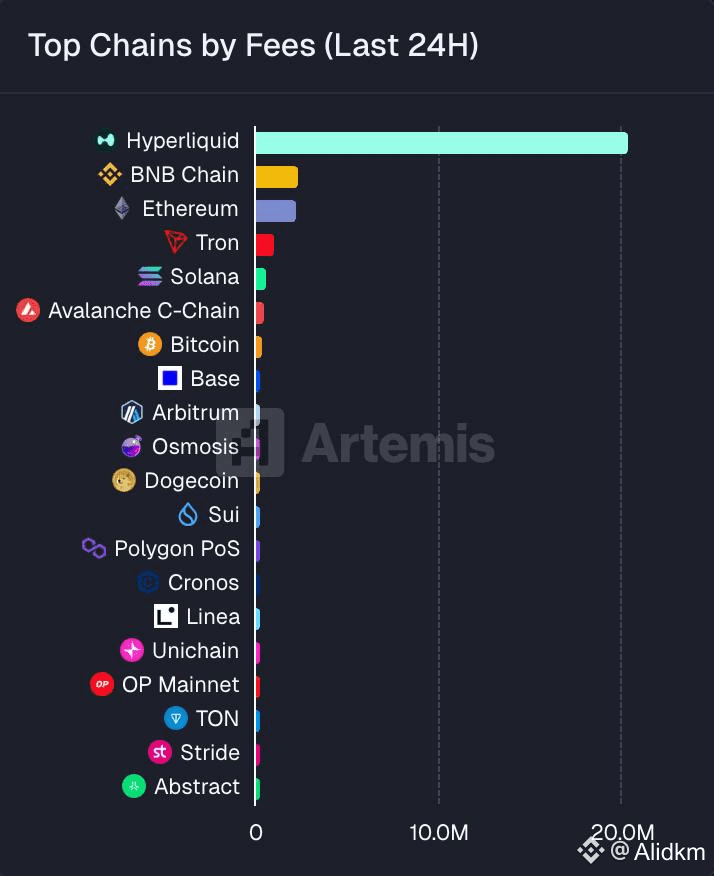The latest 24-hour fee revenue rankings paint a startling picture, signaling a potential shift in the Layer 1 landscape. To the surprise of many, Hyperliquid has not only joined the ranks of top chains but has decisively taken the number one spot, generating over $20 million in fees and significantly outpacing established giants like BNB Chain and Ethereum.
What Does This Data Tell Us?
1. The Rise of Hyperliquid L1: Hyperliquid is primarily known as a decentralized exchange (DEX) for perpetual futures. Its top position in fee generation underscores a massive surge of activity on its native Layer 1 blockchain. This indicates that traders are flocking to its platform, likely driven by high leverage opportunities and a superior user experience for perpetual trading.
2. More Than Just a DEX: By outperforming entire ecosystems like BNB Chain and Ethereum in fee revenue, Hyperliquid demonstrates that a highly specialized, high-throughput chain dedicated to a single, high-demand use case (perpetuals) can achieve remarkable economic density.
3. A Shift in Trader Activity: The data suggests that a significant volume of speculative capital and trading activity is moving away from traditional, general-purpose blockchains towards optimized, app-specific chains. The fact that Tron and Solana also rank highly further supports this trend towards chains that prioritize performance for specific financial applications.
The Bigger Picture:
While Ethereum and BNB Chain continue to be the bedrock of DeFi and host an unparalleled array of dApps, this fee ranking is a powerful reminder that the market rewards specialization. The dominance of chains like Hyperliquid, Solana, and Tron in this metric highlights the intense demand for efficient, low-latency trading environments.
Conclusion:
Hyperliquid's commanding lead in fee generation is a clear market signal. It's not just another DeFi protocol; it's a formidable L1 competitor that has successfully captured a massive niche. For traders and investors, this underscores the importance of looking beyond the usual suspects and monitoring activity on these high-performance chains, as they are becoming the new frontier for on-chain derivatives and trading volume.



